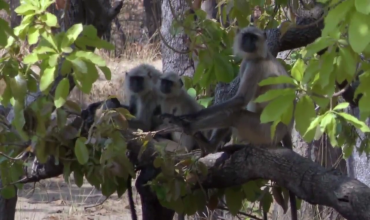-
or
Move to the previous cue
-
or
Move to the next cue
-
or
Increase size of captions
-
or
Decrease size of captions
-
or
Translate current cue
Plot summary
The sixth episode enters the world of insects. By assuming a variety of body shapes and incorporating armour and wings, they have evolved diverse survival strategies and become the most abundant creatures on Earth. In Chilean Patagonia, male Darwin's beetles lock horns and hurl their rivals from the treetops in search of a mate. A damselfly's chance to mate and lay eggs can be cut abruptly short by a leaping frog. Monarch butterflies use their wings to power them on an epic migration to their hibernating grounds in the forests of Mexico's Sierra Madre. Many insects carry chemical weapons as a form of defence. High-speed cameras show oogpister beetles squirting formic acid into the face of an inquisitive mongoose and bombardier beetles firing boiling caustic liquid from their abdomens. Some insects gain an advantage through co-operation. When an American black bear destroys a bee's nest, the colony survives by carrying their honey to a new site. Japanese red bug nymphs will move to a different nest if their mother fails to provide sufficient food. In the Australian outback, male Dawson's bees fight to the death over females emerging from their nest burrows. As a result, all will die, but the strongest mate most often. Argentina's grasscutter ants form huge colonies five million strong. They feed on a fungus which they cultivate underground, in nest structures which have natural ventilation. Life on Location documents the Mexico crew's attempts to rig up aerial camera shots of the awakening monarch butterflies.

